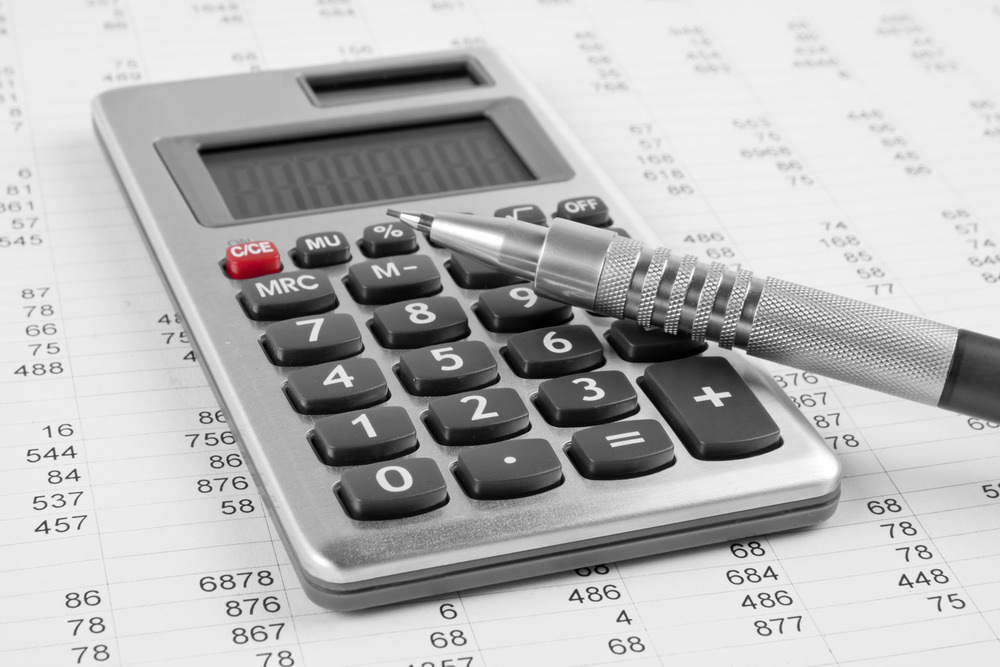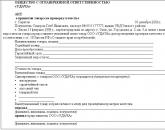The formula for calculating the cost of services, products sold and total cost
What is cost
The cost price represents the organization's current expenses incurred in the process of production and sale of products and expressed in monetary terms. It is an essential and capacious category in the economy of the country and each individual enterprise.
The cost price is able to express a qualitative assessment of how much it costs the company to produce and sell products. It is this economic indicator that has a proportional impact on financial results, so the lower the cost of the enterprise, the higher its profit and profitability.
There are a number of economic and analytical operations in an organization that require costing results:
- assessment of planned cost indicators and its dynamics;
- calculation of the profitability of general activities and individual categories of products;
- cost accounting among production;
- identification of reserves to reduce costs;
- calculation of product prices;
- determining the effectiveness of the introduction of new technologies or types of products, and others;
The cost of production is equal to the expenses of the organization, which are of a different nature. They may be related to the main production or be auxiliary, depend on the production process or be unrelated to it.
Types and types
The variety of cost types is determined by the impact of certain criteria:
- According to the stages of the production process, the cost of gross, finished, shipped and sold products is considered.
- According to the quantity of production, the cost of one unit of goods or the total total quantity is distinguished.
- In terms of included costs, there are full and reduced costs.
- According to the type of analytical operations, there are normative, planned and actual costs.
- At the place of cost accounting, shop, production and full costs are distinguished.
The size of the workshop cost includes the costs of the main production workshops, to calculate the production cost, general business expenses are added to the workshop. Total cost is all expenses of the enterprise, including commercial costs.
Cost types are classified according to two main features that express its structure:
- The cost price calculated according to costing items.
- Cost calculated by cost elements.
Structure
The cost structure consists in its general structure of several blocks, more specifically, groups of cost elements:
- Material costs: the cost of materials and raw materials, energy, fuel and other materials attributable to general production costs.
- Labor costs: salary of the personnel of the main and auxiliary productions, employees, specialists and MOPs.
- Deductions to funds from wages.
- depreciation charges.
- Other costs: overhead costs, payment for advertising and other marketing services, and others.
At each particular enterprise, each block of costs occupies its respective share in the overall cost structure. Determining the percentage of the cost group in the total volume is necessary, first of all, to analyze the impact of costs on the production process and develop ways to reduce costs.
Calculation methods
Currently, the following costing methods are used:
- normative;
- process-by-process;
- across;
- showy.
Each of them has its own procedure and features of cost accounting. The choice of method, first of all, depends on the type of control over the objects of cost accounting.
The normative method provides for the following sequence:
- calculation of the preliminary amount of the standard cost for each type of product;
- determination of rate fluctuations during a certain month to change the calculated cost;
- accounting of all expenses for this month in relation to the norms and their changes;
- clarification of the reasons for deviations;
- derivation of the result of the total cost, which has developed from the standard cost, changes in the norms and their deviations.
Process way is designed to calculate the cost of production at enterprises where products are produced in large batches in a short time and, accordingly, there are no remnants of unfinished products. It is carried out by taking into account all the costs of items spent on the total output. The cost of one unit is found by dividing the total cost by the number of products. To be able to control costs, all production is divided into certain stages (processes).
Transverse method is aimed at calculating the cost in organizations that consider the costs of redistribution. These are successive stages in the processing of raw materials of industrial or agricultural value into finished products. Product types are not taken into account.
custom way is aimed at calculating the cost by adding direct costs for individual orders for the release of various types of products. The actual cost of one unit of production is obtained by finding the quotient of the sum of costs and the quantity of goods for a specific order.

Total cost calculation formula
To calculate the total cost, two methods are used: costing or budgeting in the form of applying cost estimates.
Costing for cost calculation is carried out based on the following points:
- Raw materials and other material costs.
- Energy and fuel used for the production process.
- Depreciation of fixed assets involved in production.
- Salary and tariff rates of the main production employees.
- Additional pay for key personnel.
- Contributions to social funds from the salaries of these workers.
- General production expenses.
- Travel expenses.
- Services of other organizations.
- Administrative expenses.
The full cost price according to the method of accounting for cost elements involves taking into account the following types of expenses:
- Material costs:
- Production materials.
- Energy and fuel materials.
- General production expenses.
- Salary:
- Employees engaged in the main production.
- Maintenance production staff.
- Intellectual workers.
- Employees.
- Junior maintenance staff.
- Social Security contributions.
- Depreciation.
- Other.
As a result, the basic formula for calculating the total cost is:
Full cost = MT (item 1) + OT (item 2) + CO (item 3) + Am (item 4) + Pr (item 5).
Calculation of the cost of services
The cost of services is calculated by following certain rules:
- To calculate the total cost of services, all costs incurred in the course of their provision are added up.
- Each type of service is a specific form of cost calculation.
- The costs incurred are allocated to each client.
- At the end of a certain time, the costs are summed up.
When calculating the cost of services, first of all, it is important to determine all the components of which it consists. Material and raw material costs will depend on the type of service. For example, hairdressers spend varnishes, foams, hairpins, etc. on clients.
Calculation example.
For an illustrative example, let's consider the procedure for calculating the cost of Mir Mebeli LLC, which is engaged in the production of cabinet furniture. Calculate the cost of production of office tables for one month. It is known that the following costs were incurred for 200 tables:
- Raw Materials:
- tree 150,000 rubles;
- glue 20,000 rubles;
- self-tapping screws and screws 35,000 rubles;
- varnish 18,000 rubles;
- Fuel and energy 134,000 rubles.
- The salary of the main workers is 89,000 rubles.
- Insurance premiums 30438 rubles.
- The cost of operating the equipment is 12,500 rubles.
The total cost of the total is 150,000 + 20,000 + 35,000 + 18,000 + 134,000 + 89,000 + 30,438 + 12,500 is equal to 488,938.
The cost of one unit of production 488938/200 is equal to 2444.69 rubles.
Cost of goods sold calculation formula
The cost of goods sold expresses its cost based on accounting for the costs of its production. Therefore, initially determine the costs that change in proportion to the production process, namely, they calculate the amount of variable costs per unit of output. After that, the sum of the remaining expenses is added to the calculations.
The cost of goods sold is calculated using the formula:
Sbrp \u003d SB pr + UPr;
where Sbrp - the cost of goods sold; SB pr - the cost of goods sold for direct variable costs; Upr - conditionally fixed costs.
Planned cost calculation formula
The calculation of the planned cost refers to one of the main and important processes for planning further activities and is carried out to set the amount of costs for the planned time. The calculation is carried out at the beginning of the reporting year, and its results are broken down in appropriate proportions by quarters.
The data for determining the planned cost are:
- production plan;
- direct costs incurred;
- norms of material expenses;
- norms of energy costs;
- prices;
The formula for calculating the planned cost price has a similar form to the actual cost formula, only instead of the actual costs, the planned cost indicators are substituted into it.
The calculation of the cost of production is necessary for the correct planning of economic activities and obtaining effective results based on its results.
At various stages of production, various types of costs are calculated. But the essence of any cost is the same, it expresses the amount of expenses incurred. The cost value is necessary not only for planning production processes, but also for analyzing the costs incurred in order to develop actions to reduce them. Thus, the value of the cost price can have an impact on profit.
Popular
- How to get a TIN: possible ways
- What kind of business can you do?
- Written notice of termination of the lease
- Business from scratch. Things to do?
- Cost of goods sold: formula, methodology and calculation example
- How to write a vacation application - examples
- What kind of business can be opened in a small town or village?
- The formula for calculating the cost of services, products sold and total cost
- Sample memorandum: I bring to your attention
- Example of an explanatory note for being late for work




